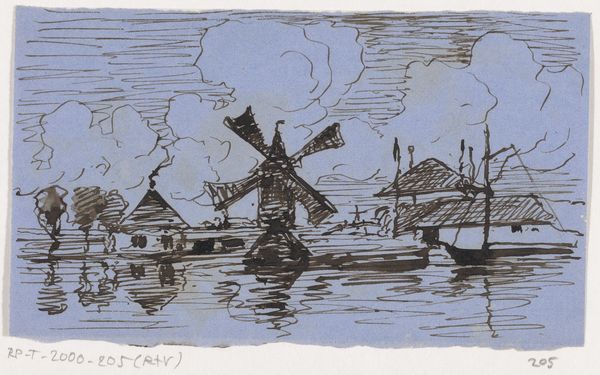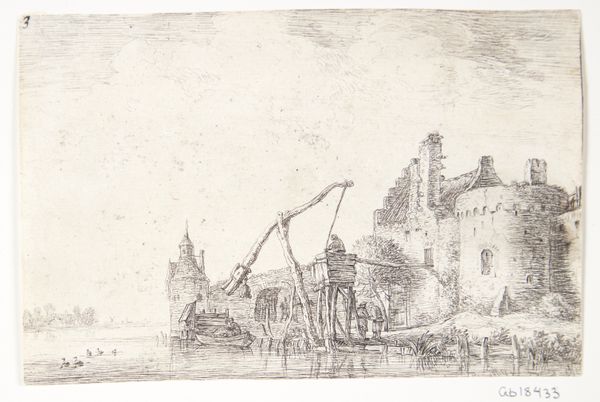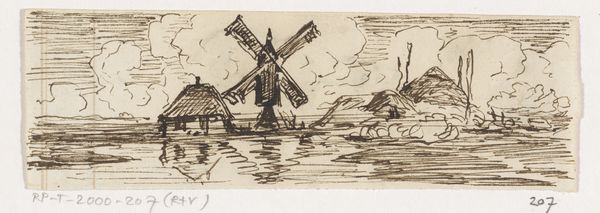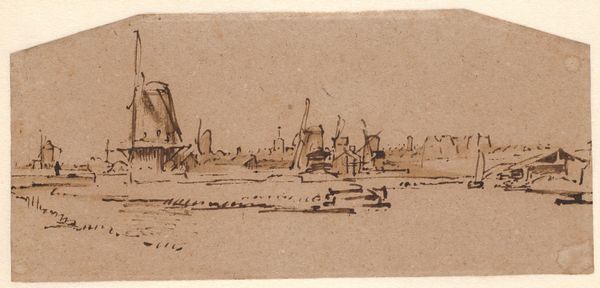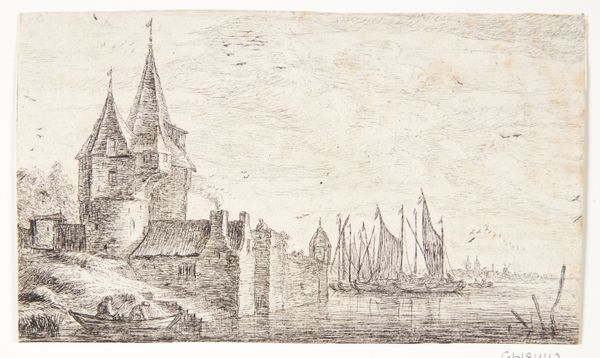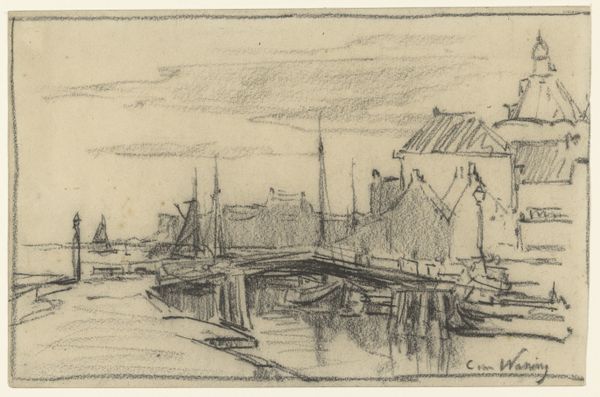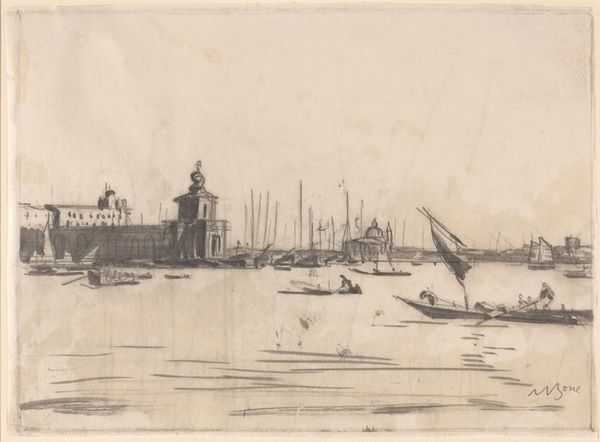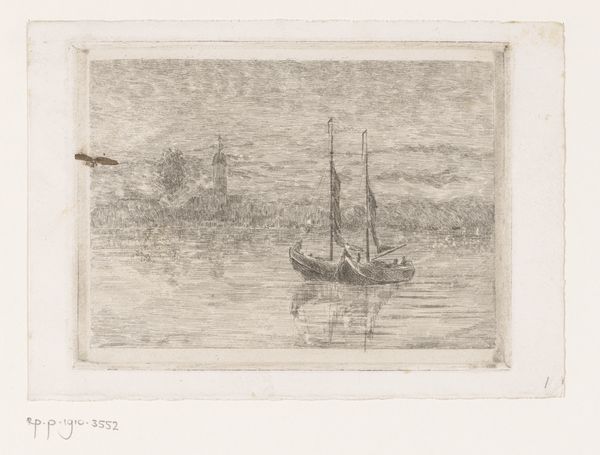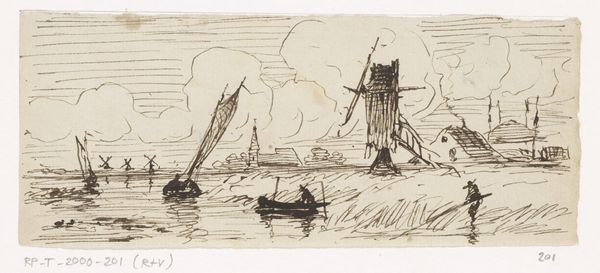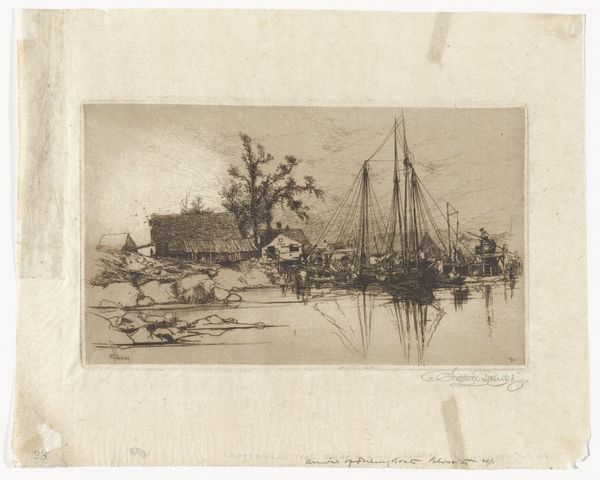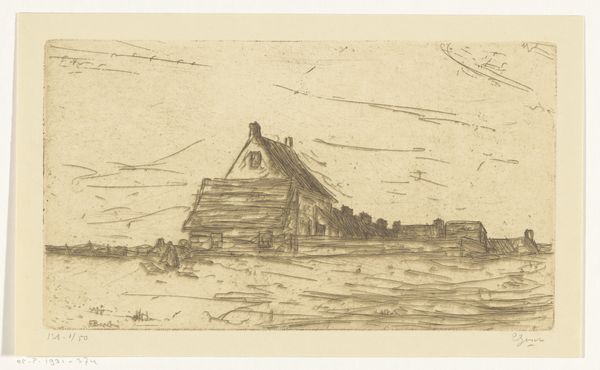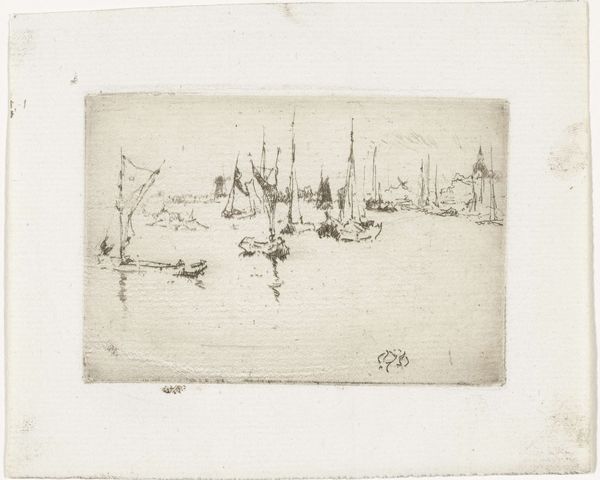
Dimensions: height 68 mm, width 113 mm
Copyright: Rijks Museum: Open Domain
Curator: Here we have Johannes Tavenraat’s “Rivierlandschap,” or “Riverscape,” likely created sometime between 1840 and 1880. It’s an ink drawing, a fleeting scene captured on paper. What’s your initial take on it? Editor: Dark, almost somber, despite depicting such an everyday scene. There's something about the stark lines and the lone figure in the boat that feels quite melancholic. Is that the feeling Tavenraat was trying to evoke with these images, though? Curator: Perhaps. It’s useful to consider what it takes to make such a picture, beyond just artistic skill. What kind of ink was available to Tavenraat at the time? How would the type of paper have influenced his approach? The availability and cost of these materials shaped the artwork's materiality and, arguably, its aesthetic. Editor: True. Though even with limited resources, the symbolic weight of certain recurring images shouldn't be ignored, whether the artist planned them, or they’re emergent! The windmill, for instance, towering over the other buildings, dominating the horizon… it signifies industry, of course, but it has connections to folklore and human ambition. Curator: The choice of ink is critical! Its viscosity affects how easily he can render these lines and affects how easily the image will wear over time. And consider what function rivers serve: as the central highways that were so important to both the economy and defense, of their moment. These aren’t simply pretty scenes, but documentary and artistic artifacts produced by industrial culture! Editor: Fair enough! Still, I wonder about the psychological landscape here. The figure in the boat feels dwarfed by the landscape and man-made structures—like a metaphor for human isolation amidst a rapidly changing world. Or maybe that is just my mind imposing our contemporary unease with progress… Curator: And that "unease," if we accept it for the moment, is itself rooted in concrete, material conditions, in the history of technological advancement. The ink, paper, everything is embedded in cultural context and modes of making! Editor: Well, Tavenraat’s “Riverscape,” whether deliberately or unconsciously, reveals anxieties alongside productivity. It’s interesting how he captures that transition so starkly in a few lines and shapes. Curator: Indeed. And focusing on the tangible production of it keeps our interpretations anchored in history rather than pure speculation. Editor: I see what you mean, but acknowledging that these works are heavy with shared cultural memory provides more layers to explore! Curator: Maybe we're just two sides of the same artistic coin then.
Comments
No comments
Be the first to comment and join the conversation on the ultimate creative platform.
